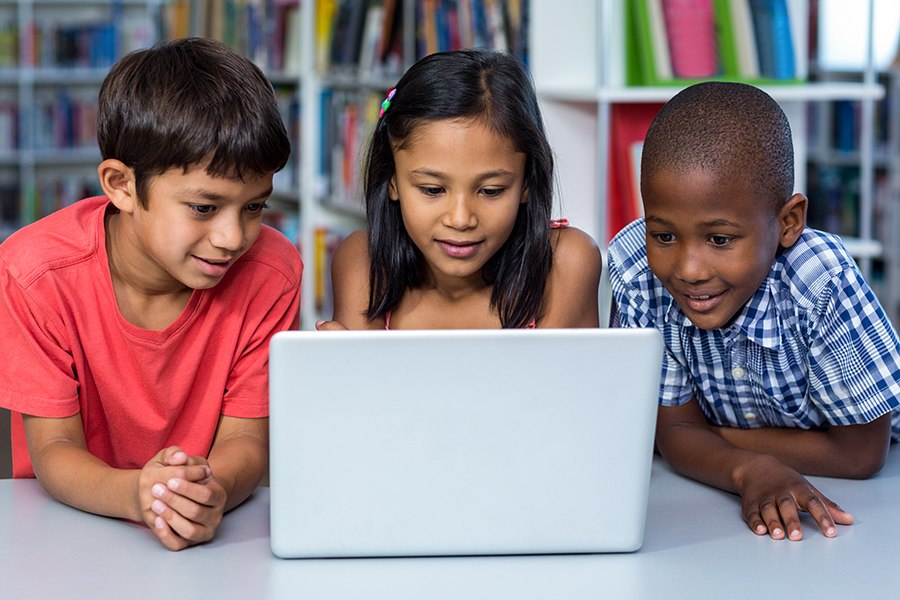As the seasons transition and back to school takes off, my focus shifts to my child’s safety, both physically and online, and how she is navigating this ever-changing digital landscape. Just as we previously collaborated on a safety plan for physical situations, I realized it was now necessary to develop a digital safety plan. Recognizing how many important topics I still haven’t discussed with my third grader; I knew I needed to come up with a plan.
Creating an open communication cadence, just as we do with general safety and well-being, is critical. We need to set boundaries, talk about protecting personal information, discuss cyberbullying, and how to be a good digital citizen. I must be proactive and learn about what online access my daughter has at school and review parental controls for her tablet. All these thoughts overwhelmed me initially, but when I took a moment to write them down and organize them, they felt doable. Remember, the key is to make this an ongoing conversation, like those we have around general safety and well-being.
What works for your family may look a little different, but here is how I’ve outlined the essential aspects:
Establish Ground Rules:
- Set boundaries and establish an ongoing dialog.
- Address the risks of sharing personal information online and how to refrain from it.
- Discuss why we do not talk with strangers online.
- Establish a boundary around obtaining parental consent before downloading, purchasing, or installing software.
Safety and Wellbeing:
- Discuss how to avoid inappropriate websites, including what is inappropriate and how to stay safe.
- Offer strategies on how to protect personal information.
- Provide guidance on recognizing and dealing with cyberbullying.
- Encourage children to share how they feel about this, ask questions, and get curious about the online world around us.
Set Limits for Online Activities and Devices:
- Define daily limits for screen time and other online activities.
- Establish a technology curfew, including time for reading and relaxing offline.
Parent Activities:
- Review and set parent controls on all devices in the home.
- Understand the full breadth of online activities your child has access to, at home and at school. Does their school have a computer science curriculum in place? Do they have access to a keyboarding curriculum to help prepare them for online assessments? Are they already getting a lot of screen time at school?
- Regularly monitor your child’s devices, browser history, and other digital interactions.
Collaborate with Your School:
- Find out what curriculum for online safety, digital citizenship, technology, and computer science your school is using. If they do not have a curriculum in place, ask your principal how they plan to teach these essential skills.
- Recognize that online safety education needs to be an ongoing conversation with learning taking place throughout the year.
- Work with your school on helping to nurture your child into a responsible digital citizen.
Now that my online safety plan is organized, I can go into the back-to-school season with my daughter feeling confident that she will have the support, communication, and supervision she needs to safely navigate our digital world.
Ready to learn more about staying safe online? Check out our Webinar, “Staying Safe and Secure at School” by clicking here or the button below.


Kamala Wymore
Manager of Customer Success
Kamala Wymore is a future-minded educator who fell in love with computer science and is now in a leadership role at one of the leading K-12 computer science organizations, Learning.com. She has over 20 years of experience in education, technology, and leadership. She has worked in education all her life, from after-school programming to the classroom, and now as a Manager of the Customer Success Team at Learning.com. She is passionate about computer science, online safety, digital literacy skills, and coding. Kamala also volunteers with Toastmasters on the executive committee and volunteers at her local elementary school as a Site Council Committee Member.
Further Reading
Examples of Technology Literacy: Empowering Students in the Digital Age
Technology has become part of almost every aspect of our lives, shaping how we communicate, learn, work, and solve problems. For today’s students,...
Netiquette as a Tool for Promoting a Positive Classroom Culture
Technology has become an essential part of modern classrooms – beyond being part of “future readiness,” it’s a necessary everyday skill for K-12...
How Keyboarding Skills Enhance Digital Literacy Across Subjects for K-12 Students
In today's rapidly evolving digital landscape, digital literacy is essential for students to thrive in both their academic and future professional...




